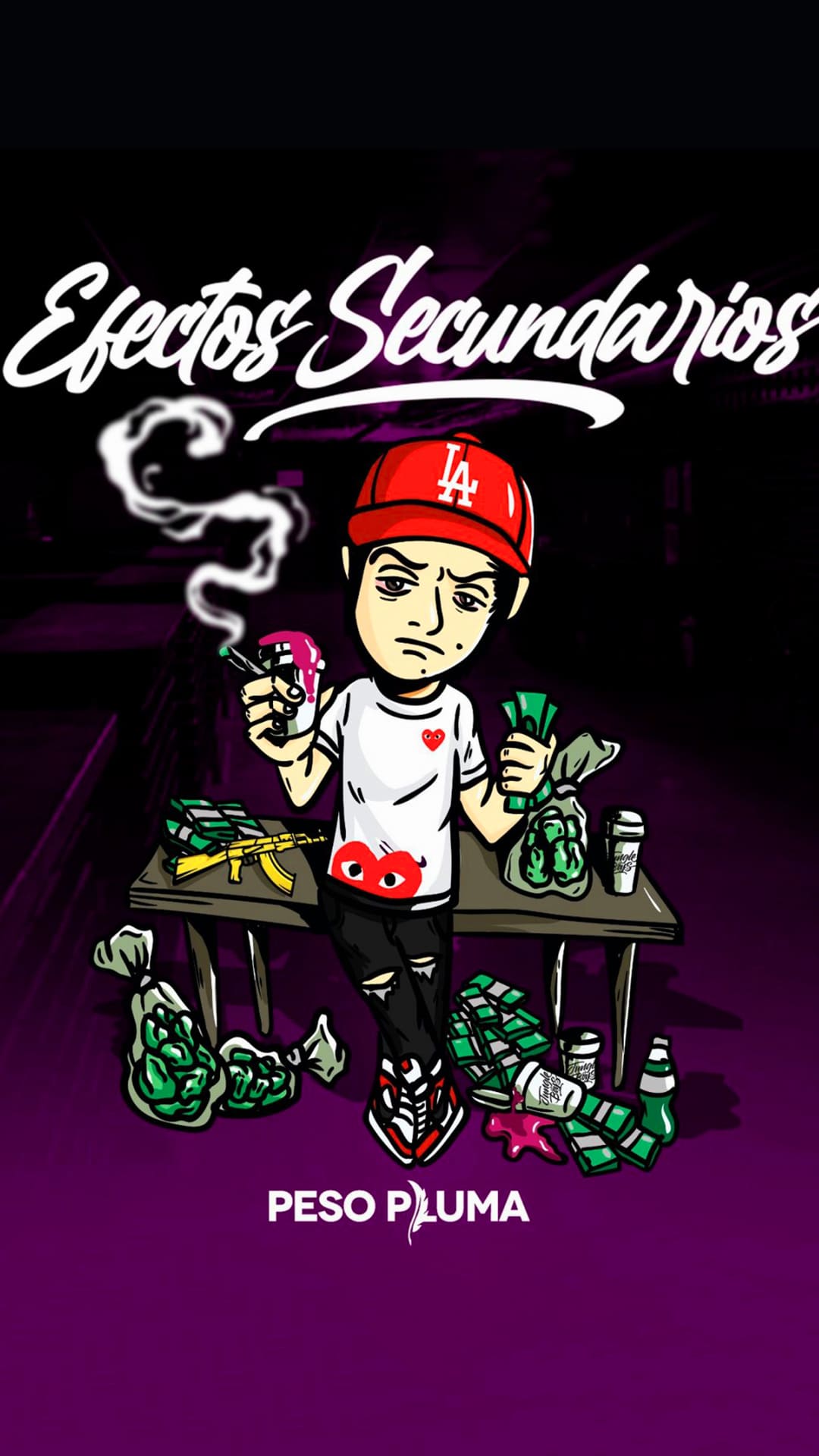Hey there, boxing fans and culture enthusiasts! If you’ve ever found yourself diving deep into the world of boxing, chances are you’ve come across the term "peso pluma." But what exactly does it mean? Beyond just being a weight class in boxing, the peso pluma ethnic background is a fascinating journey into the roots and heritage of those who carry this title with pride. Today, we’re going to explore this topic in-depth, unpacking the cultural significance and the stories behind it. So, buckle up, because this is going to be a ride!
You know how sometimes a single phrase can carry so much weight? Well, "peso pluma" is one of those phrases. It’s not just a label; it’s a reflection of identity, culture, and legacy. The term has deep roots in Latin American culture, and understanding its ethnic background gives us a glimpse into the lives of those who have made it iconic in the world of sports.
Now, let’s get real for a second. The peso pluma weight class isn’t just about numbers on a scale. It’s about the fighters who step into the ring with their heritage on their shoulders. These athletes bring more than just skill—they bring stories, traditions, and a sense of pride that resonates across continents. Let’s dive into this rich tapestry and see what makes peso pluma so special, shall we?
Read also:Alicia Keys Parents Ethnicity Unveiling The Rich Cultural Tapestry
Understanding the Peso Pluma Weight Class
Let’s kick things off by breaking down what peso pluma actually means. In boxing, peso pluma refers to the featherweight division, which sits at 126 pounds (57 kilograms). But don’t let the name fool you—these fighters pack a punch that’s anything but lightweight. The term "pluma" comes from the Spanish word for "feather," and it’s a nod to the agility and speed that these athletes bring to the ring.
Why Does Peso Pluma Matter?
Here’s the deal: peso pluma isn’t just a weight class; it’s a symbol of resilience and determination. Fighters in this category often come from humble beginnings, and their journey to the top is nothing short of inspiring. Many of these athletes hail from Latin American countries, where boxing is more than a sport—it’s a way of life. Understanding the ethnic background of peso pluma fighters gives us a deeper appreciation for their achievements.
- Peso pluma fighters are known for their technical skills and strategic thinking.
- Many of these athletes have overcome significant challenges to reach the professional level.
- The peso pluma division has produced some of the greatest boxers in history, including legends like Salvador Sanchez and Ruben Olivares.
Exploring the Ethnic Roots of Peso Pluma
Now, let’s talk about the ethnic background that makes peso pluma so unique. The majority of fighters in this division come from Latin American countries like Mexico, Puerto Rico, and the Philippines. These regions have a rich boxing tradition, and the peso pluma weight class has become a symbol of national pride.
Where Do Peso Pluma Fighters Come From?
Take Mexico, for example. Boxing is deeply ingrained in Mexican culture, and peso pluma fighters are often celebrated as national heroes. The same goes for Puerto Rico, where boxers like Felix Trinidad and Miguel Cotto have become household names. Even in the Philippines, where Manny Pacquiao reigns supreme, the peso pluma division has produced its fair share of champions.
Here’s a fun fact: the peso pluma weight class is particularly popular in countries where boxing is seen as a pathway to success. For many athletes, it’s not just about winning—it’s about representing their communities and inspiring the next generation.
Breaking Down the Cultural Significance
So, why does the ethnic background of peso pluma fighters matter? Well, it’s all about representation. When you see a fighter stepping into the ring with their country’s flag draped around their shoulders, it’s a powerful moment. It’s a reminder that boxing isn’t just about individual achievement—it’s about community, culture, and identity.
Read also:Natalie Hanby Age Unveiling The Life And Journey Of A Rising Star
How Does Culture Influence Boxing?
Culture plays a huge role in shaping the way boxing is perceived and practiced. In Latin American countries, boxing is often seen as a way to rise above adversity. Fighters are celebrated not just for their skills but for their ability to overcome challenges. This mindset is deeply rooted in the ethnic background of peso pluma athletes, and it’s what makes them so compelling to watch.
Let’s take a look at some of the cultural elements that influence peso pluma boxing:
- Family ties: Many peso pluma fighters come from families where boxing is a tradition.
- Community support: Local communities often rally behind their fighters, providing both financial and emotional support.
- Music and tradition: Boxing events in Latin America are often accompanied by traditional music and dance, adding to the cultural significance of the sport.
Legendary Peso Pluma Fighters
When it comes to peso pluma, there are a few names that stand out in the history books. These fighters have not only achieved greatness in the ring but have also become symbols of their ethnic background. Let’s take a moment to honor some of the legends of the peso pluma division.
Salvador Sanchez: The King of Featherweights
Salvador Sanchez was a Mexican boxer who dominated the peso pluma division in the late 1970s and early 1980s. Known for his incredible speed and precision, Sanchez was a true pioneer in the sport. Tragically, his life was cut short in a car accident at the age of 23, but his legacy lives on as one of the greatest peso pluma fighters of all time.
Ruben Olivares: The Pride of Mexico
Ruben Olivares is another name that deserves recognition. This Mexican fighter won world titles in three different weight classes, including peso pluma. Olivares was known for his incredible stamina and determination, and he remains a beloved figure in the world of boxing to this day.
Modern-Day Peso Pluma Stars
While the legends of the past have left an indelible mark on the peso pluma division, there are plenty of modern-day stars keeping the tradition alive. These fighters continue to inspire fans around the world with their skill, determination, and cultural pride.
Miguel Berchelt: A Force to Be Reckoned With
Miguel Berchelt is a Mexican boxer who currently holds the WBC featherweight title. Known for his powerful punches and relentless style, Berchelt has become one of the top names in the peso pluma division. His success is a testament to the enduring legacy of Mexican boxing.
Rey Vargas: Carrying the Torch
Rey Vargas is another Mexican fighter making waves in the peso pluma world. With multiple world titles under his belt, Vargas has proven himself as a dominant force in the division. His ability to adapt and evolve in the ring has earned him a spot among the greats.
The Future of Peso Pluma Boxing
As we look to the future, it’s clear that the peso pluma division will continue to thrive. With a new generation of fighters emerging from diverse ethnic backgrounds, the sport is poised to reach new heights. But what does this mean for the cultural significance of peso pluma?
Expanding Horizons
While the majority of peso pluma fighters have traditionally come from Latin America, we’re starting to see more athletes from other regions making their mark. This diversity is enriching the sport and broadening its appeal. Whether it’s fighters from Africa, Asia, or Europe, the peso pluma division is becoming a true global phenomenon.
Challenges and Opportunities
Of course, no sport is without its challenges. For peso pluma fighters, the road to success is often fraught with obstacles. From financial struggles to health concerns, these athletes face a unique set of challenges that require resilience and determination. But despite these hurdles, the future looks bright for the peso pluma division.
How Can We Support Peso Pluma Fighters?
There are plenty of ways to support peso pluma fighters and help them achieve their dreams. From attending live events to following their careers online, fans play a crucial role in the success of these athletes. By showing our support, we can help ensure that the rich tradition of peso pluma boxing continues for generations to come.
Conclusion: Celebrating the Peso Pluma Legacy
And there you have it, folks! The peso pluma ethnic background is a fascinating topic that sheds light on the rich cultural heritage of boxing. From the legends of the past to the stars of today, the peso pluma division continues to inspire fans around the world. As we’ve seen, this weight class is about more than just numbers on a scale—it’s about identity, culture, and community.
So, what can you do to get involved? Start by following your favorite peso pluma fighters on social media, attending live events, and sharing their stories with others. Together, we can help keep the legacy of peso pluma boxing alive and thriving.
And remember, the next time you watch a peso pluma bout, take a moment to appreciate the cultural significance of what you’re seeing. It’s not just a fight—it’s a celebration of identity and heritage. Thanks for joining me on this journey, and I’ll see you in the next corner!
Table of Contents


